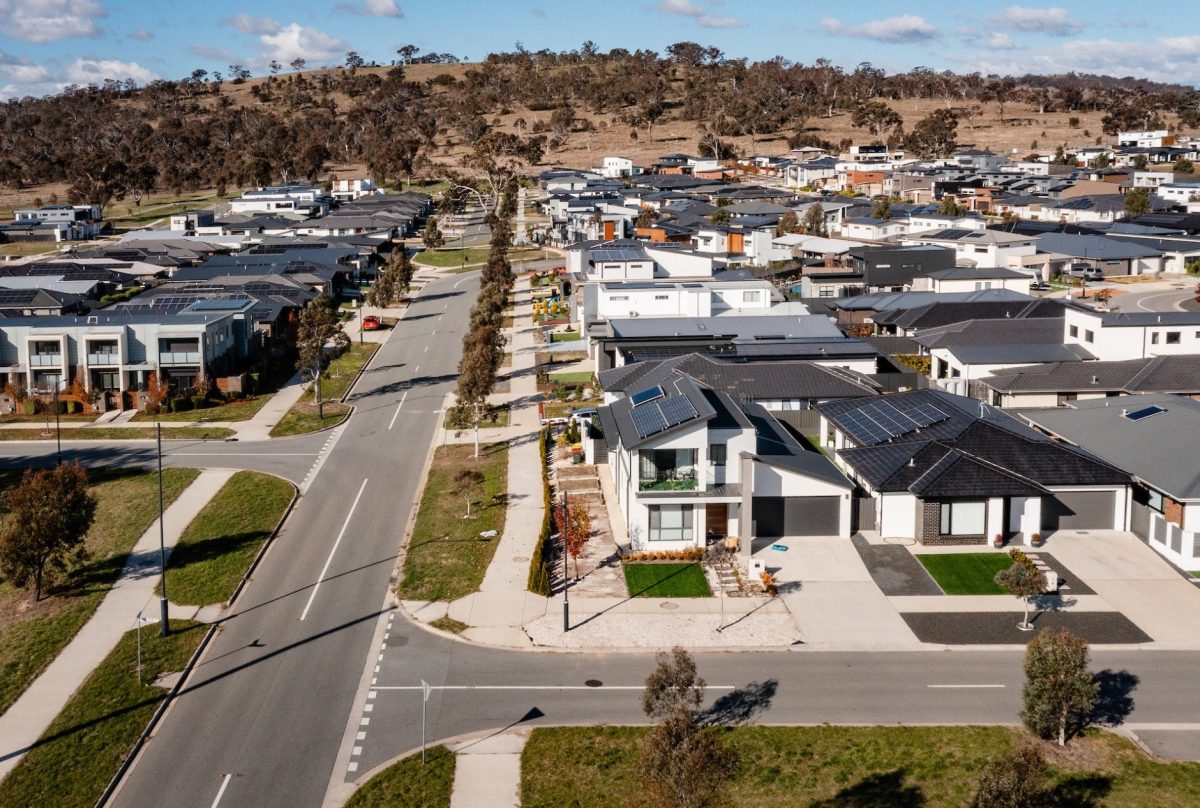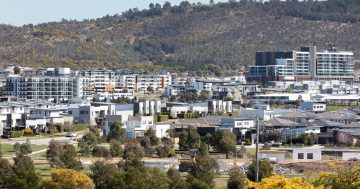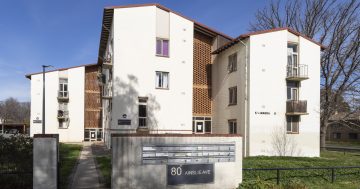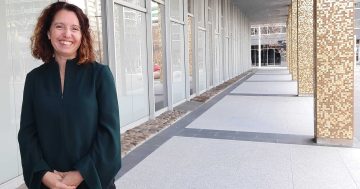
New homes in Canberra. The Sustainable Building Pathway aims to make them even more energy efficient. Photo: ACT Government.
A new 10-year plan has been unveiled to make Canberra buildings cooler in summer and warmer in winter and, at the same time, slash energy bills.
The ACT Government’s Sustainable Buildings Pathway also aims to reduce carbon footprints, cut waste and water use, reduce toxic materials and lower maintenance costs.
Minister for Sustainable Building and Construction Rebecca Vassarotti said the Pathway would lead to more sustainable and climate-ready buildings for the Territory.
Ms Vassarotti said the measures would, for many Canberrans, mean up to 70 per cent less energy use in their homes and massive savings on their energy bills.
“I’ve often heard of the plight of Canberra homes. Too cold in winter, they say, and far too hot in summer,” she said.
“This plan will set in motion a building system made for Canberrans by Canberrans so that homes built here are ready to adapt to our climate.”
Ms Vassarotti said the implementation earlier in the year of seven-star energy efficiency ratings for Canberra buildings would help, but there was more that could be done to deliver cost-effectiveness and better comfort.
She said this did not have to mean that homes, offices and shops cost more to build, saying that better design, materials efficiency, and reductions in waste reduce upfront, operational, and whole-of-life costs.
The Pathway would also assist the industry in reducing carbon emissions from steel and cement, which are expected to become the largest source of emissions in the building sector in the coming decades. It would also help the ACT achieve its goal of net zero emissions by 2045.
Increases to minimum energy performance standards would help deliver net-zero new residential buildings, while a requirement to develop building manuals for new and existing buildings would document their maintenance and plan for the transition from gas to electric systems.
A national approach to measuring and disclosing embodied carbon would be part of moving to minimum standards for new ACT commercial buildings.
New ministerial guidelines for the use of sustainable materials for buildings under the Building Act 2004 would also be developed.
Ms Vassarotti said moving to a more sustainable building sector was a challenge, but also an opportunity for the industry to showcase innovation.
“I encourage the local industry and the community to look at the strategies outlined in the Pathway so we can work together to make smarter and more sustainable building and renovation choices,” she said.
“The ACT Government will continue to advocate for national buildings policies that lead to greater sustainability, innovation, and improve quality of life outcomes for a cleaner and climate-friendly future.”
Acting CEO of Master Builders ACT Ziad Zakout said builders and clients needed to be able to plan for the future and understand the cost implications or benefits.
“We also need to remember that we are in the midst of a housing shortage and are already falling short of Housing Accord targets,” he said.
“It is critical that any new reforms are cost neutral to avoid piling on costs and creating even more roadblocks to building the homes and infrastructure Canberra needs.”
Mr Zakout said that with the operation of buildings accounting for half of Australia’s electricity use and almost a quarter of greenhouse gas emissions, there was an obvious need to transition towards greener building practices.
“MBA ACT is committed to working with the local construction industry and the ACT Government to tackle the challenges of electrification, reduce carbon emissions in building products and promote sustainable practices,” he said.
“Collaboration will be key to the success of this pathway, and we must bring local industry along on the journey. We look forward to working closely with the government and the local building industry to transition towards a more sustainable built environment for Canberra.”
The green building movement has thrown its support behind the Pathway.
Australian Sustainable Built Environment Council executive director Alison Scotland said she was thrilled to see the ACT Government’s leadership in championing greener, healthier, and more sustainable buildings for the benefit of the entire community.
“We’re eager to collaborate with the ACT government to foster an integrated approach and set a pioneering policy direction for the rest of the country to follow,” she said.
Green Building Council of Australia CEO Davina Rooney said the Pathway showcased how the ACT Government, industry and community could accelerate the delivery of sustainable, climate-ready buildings.
“This Pathway is a model for tackling the challenges of sustainable building and seizing the opportunities. We commend the ACT Government’s vision and look forward to working together to scale up sustainable building over the next decade.”
Light House ArchiScience managing director and lead scientist Jenny Edwards said sustainable housing did not have to be big, high tech or expensive.
“A science-based approach to home design and construction can deliver fabulous, affordable and efficient homes. Homes that are climate resilient, low carbon and comfortable,” she said.
“We encourage people to demand sustainable buildings from designers, builders and developers. Everybody should live in a healthy home with low energy bills.”





















